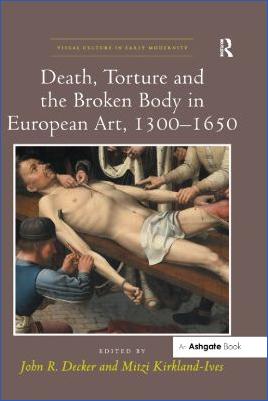
| Death, Torture and the Broken Body in European Art, 1300–1650 | |
| History | |
| PDF Book | |
| 281 | |
| 24.17 Mb(s) | |
|
|
| October 8, 2023 | |
| English | |
| Read PDF Book Online | |
| Click to Download the PDF |
Death, Torture and the Broken Body in European Art, 1300–1650
“Death, Torture and the Broken Body in European Art, 1300–1650” by John R. Decker is a comprehensive exploration of the ways in which European art from the late medieval period through the Renaissance depicted the body in pain and suffering. Drawing on a wide range of visual and textual sources, Decker argues that the representation of torture and death in art during this period was not simply a reflection of the violence and brutality of the times, but was also a means of exploring deeper philosophical and theological questions about the nature of suffering, the body, and the afterlife.
The book begins by examining the ways in which medieval art depicted the body of Christ on the cross, and how this imagery was used to convey theological ideas about redemption and salvation. Decker then moves on to explore the ways in which artists in the Renaissance period began to depict the body in more graphic and realistic detail, often using classical models of anatomy to create images of torture and execution that were both disturbing and compelling.
Throughout the book, Decker pays close attention to the social and cultural context in which these images were created, examining the ways in which they were used to reinforce the power of the Church and the state, as well as the ways in which they were used to subvert and challenge existing power structures. He also explores the role of gender in the representation of the body in pain, showing how women were often depicted as passive victims of male violence, while men were portrayed as active agents of punishment and torture.
Ultimately, “Death, Torture and the Broken Body in European Art, 1300–1650” is a fascinating and thought-provoking exploration of one of the most enduring and powerful themes in Western art. It is a must-read for anyone interested in the history of art, the history of ideas, or the ways in which visual culture shapes our understanding of the world around us..
Digital screenshot from the PDF Book
To learn more about the book titled: Death, Torture and the Broken Body in European Art, 1300–1650, Click the download button below to get it for free
